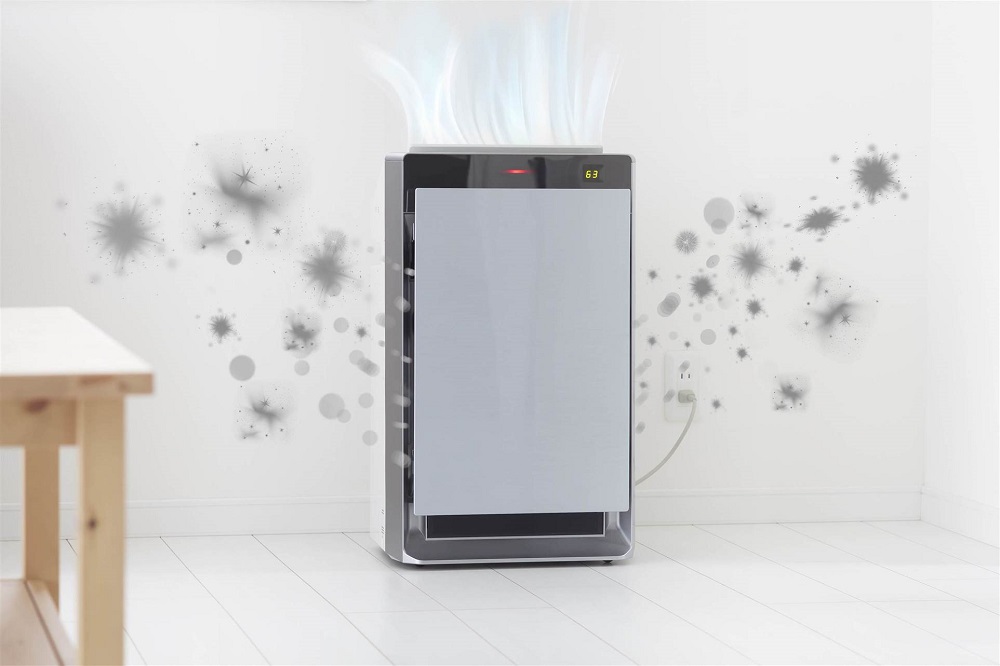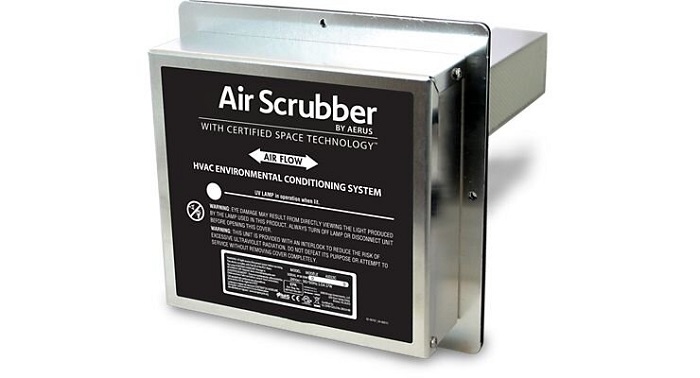If you are concerned about the quality of the air you inhale, you should search “what is an air scrubber”… Wait! You don’t need to look anywhere else! Read this article from Linquip and you’ll know how an air scrubber can change your life and improve your health! In this article, we will talk about the best air scrubbers, and provide useful information about these amazing systems.
There are many different devices designed to enhance indoor air quality such as purifiers. Air Scrubbers are designed for the same purpose. Some of these devices add moisture into the air, some take the moisture out of it, and some remove airborne pollutants such as chemical odors, chemicals, etc. from the air and as a result, provide high-quality air for the place. Air Scrubber is a little younger than other similar devices, but many people mistake it for air purifier.
What is an Air Scrubber then?
Air scrubbers are devices designed for cleaning the air in larger areas and are used for more severe pollution in an indoor space. These portable filtration systems are used both for industrial and residential purposes. Although they are considered commercial and industrial air scrubbers for removing toxic particles, chemicals, and gasses from the air, some people use them inside their homes as well. They clean the air by removing the pollution in an area up to thousands of square feet. This pollution is usually caused by remodeling projects, renovations, constructions, etc.
How an Air Scrubber Works?
Now you only know the answer to “what is an air scrubber?” But what are its parts and how it works? Air scrubbers have a primary filter (HEPA filter), a blower, a pre-filter, and a carbon filter (which is optional). These units work hand in hand to remove airborne pollutants through the filter. First, the blower sucks the air. This air passes through different filters. Each filter is used for specific purposes.
The pre-filter is for capturing the larger particles while the optional carbon filter is used for removing vapor molecules, gas, or different chemicals in the air. The last filter that the air flows through is the HEPA filter or the primary filter that is used for removing the tiny particles (even as small as 0.3 microns) that were not removed by the previous filters. After passing these filters, the clean air will be blown out of the air scrubber with the help of the blower.
These devices have two methods for cleaning the air: Wet Scrubbing and Dry Scrubbing.
-
Wet Scrubbing
In this method, the air scrubber sucks the air through a damp pad or a filter. This action results in trapping the particulate matter and contaminants that are floating freely in the air. This method works great for commercial and industrial settings. They can remove up to 99 percent of the pollution and airborne particulate matter.
-
Dry Scrubbing
This method, unlike the previous one, uses a dry filter for cleaning the air. It sucks the air through the dry filter (that is made of sorbent) and traps the contaminants and pollutants, releasing clean air to the indoor environment. As we mentioned above, the air goes through different filters, and these pollutants will be removed from the air. The blower then releases clean air into the indoor area.
Air scrubber installation is necessary if the level of airborne pollutants in the air is high and you want to have clean air in a large area. Although they are capable of cleaning the air for apartments and homes, there are cheaper options on the market that works just fine for places that have less pollution. It’s better to use these devices only if you have remodeling or construction projects going on. They will greatly help the health of the workers in the place by removing toxic particles and gas from the air they breathe.
What is the difference between an air purifier and an air scrubber?
Some think that by knowing an air purifier, they know “what an air scrubber is” But that’s not entirely correct! Although they have the same purpose, their mechanism and function are different. Up to this point, you learned how an air scrubber works. They use two methods for removing pollutant particles through different filters. And they are used for larger areas with a high level of airborne pollutants.
Air purifiers, on the other hand, remove allergens, mold spores, dust, and smoke for smaller areas with the help of different air purification technologies or HEPA filtration. Keep in mind that air scrubbers should run between 24 to 48 hours to thoroughly clean the air and remove the pollutants completely. They usually suck up and blow the air up to 6 times per hour to make sure that all the pollutant particles are removed.
Benefits of using air scrubbers
Air scrubbers can purify the air by removing pollutants as well as mold spores and smells, VOCs, pet odors, cigarette smoke, and food odor. They will greatly help to improve your health and well-being, reducing allergy symptoms, improving your level of energy by providing clean air, reducing fatigue, headaches, chest tightness, nausea, sinus problems, nose, and eye irritation, etc. If you have problems breathing or have seasonal allergies and leave in a large place, they can be a good choice for you. And if you have construction projects going on, they can be a better option than air purifiers.
So that was all there to know about Air Scrubbers. Now you know the answer to “what is an Air Scrubber” and can easily choose the best system for your home or office to breathe high-quality, clean air and enhance your well-being. Comment below and let us know what you think about these useful systems. Do you have any questions about Air scrubbers? Then sign up on Linquip and we will answer all your questions right away!
Buy Equipment or Ask for a Service
By using Linquip RFQ Service, you can expect to receive quotations from various suppliers across multiple industries and regions.
Click Here to Request a Quotation From Suppliers and Service Providers
Read More on Linquip
- What is Air Pollution? All You Need to Know
- Dry scrubbers: a brief review of everything you need to know about them
- Scrubber system: a must-read for eco-friendly companies!
- Do you know the main types of Scrubber?




